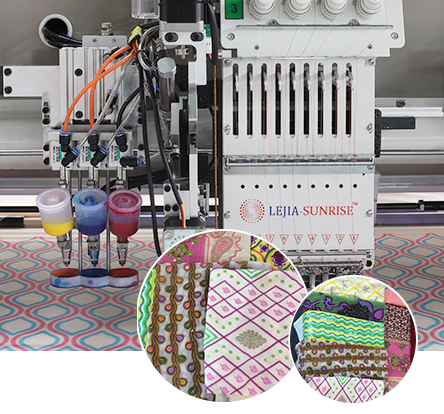

In the operation of the computerized embroidery machine, one of the most important items is the pattern-making of the embroidery machine. Today we will talk about the sequin patterning in embroidery machine patterning.
You can choose either of two ways to enter the sequin function code, and the manual sequin punching method can complete and create any sequin stitch method.
If the option "Allow setting sequin switch" on the "Auto Sequin" page is not selected, you need to insert the sequin function codes one by one. You can insert the sequin function codes one by one after inputting the complete stitches with single needle and manual single needle, or input part of it Stitching and inserting sequin function codes one by one alternately. If you select the option "Allow setting sequin switch", you can insert the sequin function codes one by one after inputting the complete stitch with single needle and manual single needle, so that you can better control the sequin function interval.

When inputting stitches, the position, stitch step and angle of the lower sequins must be strictly controlled. The position of the lower sequins must be avoided from being punctured by other needle positions. The stitch step controls the spacing between the sequins, and the angle is to avoid feeding the sequins. During the process, the dispenser collides with the embroidery thread to cause flying pieces and thread breakage. The sequined thread is realized by manual single needle after inserting the sequin code or inserting stitches one by one in the needle position editing tool. The stitching is required to be completed. The required shape is usually symmetrical and the stitch length is the same. For example, a three-line star is the "Benz" sign, but manual input is difficult to strictly achieve these requirements, and it is very cumbersome and error-prone. Usually It is difficult to input successfully at one time, and it needs to be adjusted multiple times with the needle position editing tool. This results in revisions that can only be realized by needle position adjustment by the needle position editing tool, which is very inefficient.
In manual sequins, special attention must be paid to the stitch angle of the sequins. After completing a plate, carefully check and correct those stitches with wrong angles, and optimize the stitch sequence as much as possible when continuous sequins are laid. To reduce unnecessary repetitive stitches.